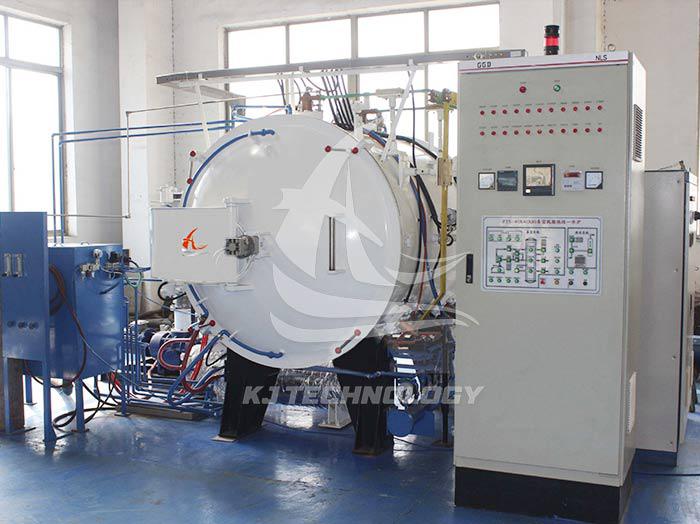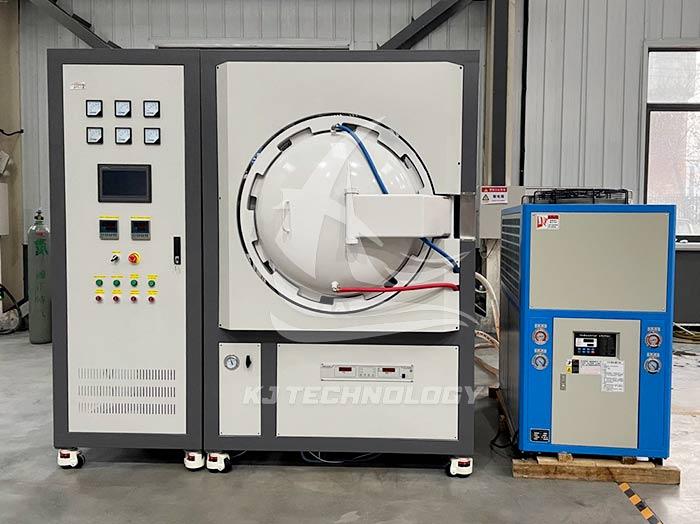Application of Vacuum Annealing Furnace in Metal Heat Treatment Industry
 03-25-2025 Author: KJ technology
03-25-2025 Author: KJ technology
Vacuum annealing furnaces have a wide range of applications in the metal heat treatment industry. The following is a detailed analysis of their applications:
1. Eliminate material defects
Vacuum annealing furnace can eliminate defects such as pores, oxides, and carbides inside metal materials. In high-temperature vacuum environments, these defective substances can be effectively removed or redistributed, thereby improving the purity and uniformity of metal materials. This helps to improve the overall performance of metal materials, such as strength, hardness, and corrosion resistance.
2. Improve material properties
Improve strength and hardness:
By vacuum annealing treatment, the grain structure in metal materials can be optimized, thereby improving the strength and hardness of the material. This makes metal materials more stable when subjected to external forces, with better wear resistance and fatigue resistance.
Improve ductility and toughness:
Vacuum annealing can also eliminate residual stresses in metal materials, improve their ductility and toughness. This helps metal materials to better adapt and resist deformation when subjected to external forces, improving product reliability and service life.
3. Applied to special materials
Vacuum annealing furnaces are particularly suitable for processing metal materials that are sensitive to oxygen or require high-purity environments, such as titanium alloys, aluminum alloys, stainless steel, etc. These materials are prone to oxidation and contamination during conventional heat treatment processes, while vacuum annealing furnaces can effectively avoid these problems and ensure the purity and performance of the materials.
4. Specific application scenarios
Aerospace:
In the aerospace field, vacuum annealing furnaces are widely used to manufacture high-precision and high-performance aerospace components. These components need to withstand extreme environmental conditions such as high temperature, high pressure, high speed, etc., so there are extremely high requirements for their material performance and reliability.
Automobile manufacturing:
In automobile manufacturing, vacuum annealing furnaces are used to process automotive components such as engine parts, transmission parts, etc. These components need to have good wear resistance, fatigue resistance, and corrosion resistance to ensure the safety and reliability of the car.
machining:
In the mechanical processing industry, vacuum annealing furnaces are used to process various precision components and tools. By vacuum annealing treatment, the hardness and wear resistance of these components can be improved, their service life can be extended, and production costs can be reduced.
5. Advantages and Characteristics
High precision temperature control:
Vacuum annealing furnaces typically use advanced temperature control systems that can achieve high-precision temperature control. This helps ensure that the metal material is uniformly heated during annealing, avoiding overheating or undercooling.
Non oxidizing environment:
The vacuum annealing furnace can perform annealing treatment in a high vacuum environment, effectively avoiding the oxidation problem of metal materials. This helps to maintain the purity and performance stability of the material.
Efficient and energy-saving:
Vacuum annealing furnaces usually adopt efficient heating methods and energy-saving designs, which can reduce energy consumption and improve production efficiency. This helps to reduce production costs and enhance the competitiveness of the enterprise.
In summary, vacuum annealing furnaces have a wide range of applications and significant advantages in the metal heat treatment industry. It can eliminate material defects, improve material properties, be suitable for special materials, and meet the needs of various specific application scenarios. With the continuous advancement of technology and the continuous development of the market, the application prospects of vacuum annealing furnaces will be even broader.








